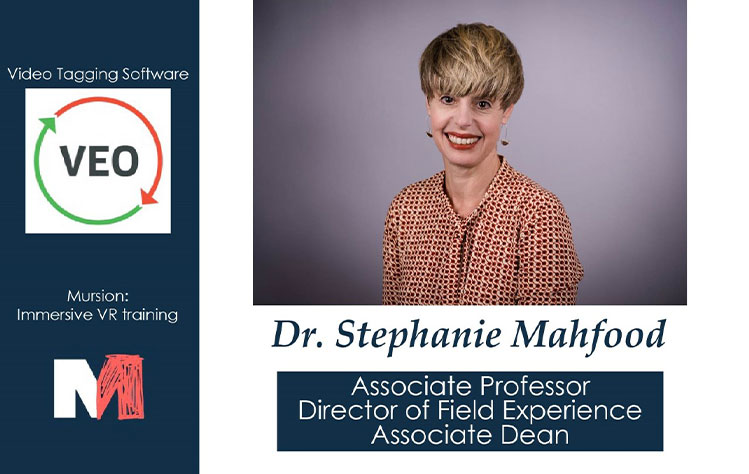Pivoting to Design an Online Field Experience during the Global Pandemic
February 22, 2022

In response to the COVID-19 pandemic, the Field Experience Office in Webster University's School of Education quickly moved to incorporate educational software programs such as VEO (Video-Enhanced Observation) and Mursion, a virtual teaching simulation that will have long-lasting impacts on how teachers are prepared to teach in a new reality after COVID-19.
Faced with very truncated access to classrooms in the spring of 2020, the Field Experience Office in the School of Education was forced to urgently rethink how the teacher certification program would equip teacher candidates completing field experiences with the knowledge and skills to be effective teachers. Through a micro-teaching, lesson study model anchored in the VEO and Mursion software programs, field experiences were redesigned to enable students to build a teaching community. In this community, teacher candidates and their university supervisors came together in a seminar meeting once a week to engage in ongoing examination and conversation about their teaching and instructional choices.
According to Stephanie Mahfood, director of Field Experience, these weekly seminars offer a time and space for teachers in this teaching community to collaborate with one another due largely to the feedback loop, which is a key feature of these two software programs. VEO (Video-Enhanced Observation) is a software that allows video footage to be uploaded and examined systematically using “tag sets.” Tag sets are built around various teaching behaviors to be examined.
A tag session yields data about the demonstration (or lack thereof) of various tags in the tag set and allows an individual to pinpoint specific teaching behaviors to improve. Mursion is a simulation software that allows teacher candidates to participate in various teaching simulations. Simulations are in a virtual classroom with a virtual group of student avatars being “driven” by a trained simulation specialist. Small group simulations allow multiple individuals to teach in the simulator over the span of an hour and allow for outside individuals to observe. Individual simulations allow for a more focused experience in the simulator for an individual student.
Mahfood noted a trusting relationship that was built among teacher candidates as a cohort with the help of Webster University field experience program supervisors who were appointed to work closely with these teachers in training during this difficult time. This trust was established due to an interactive and ongoing exchange of information among members of this teaching community, providing a shared experience for their teaching practices.
Kerri Fair, Field Experience supervisor, observed that the new field experience design and digital technologies offer candidates the ability to provide and receive different levels of feedback after each simulation or teaching experience in an even more authentic way than before. Because trust was built within the micro communities early on, students were better able to share pivotal feedback at a deeper level. In this way, the practicum experience seemed to elevate the practice of teaching in the minds of students. Rather than seeing teaching as an isolated act between teacher and students, it became clear that teaching is a community act that deserves careful reflection, conversation, and collaboration in order to be most effective.
Consequently, the Field Experience Office will continue to refine and expand these modalities even as schools and classrooms reopen and teacher candidates gain greater access to the field. Presently, the Field Experience Office is engaging in a research investigation focusing on the differentiated effects of these technologies on teacher candidates’ ability to reflect and make changes to their instructional practice. The Department of Teacher Education is also examining how these two platforms can be systematically embedded throughout the initial certification programs to provide teacher candidates with meaningful formative experiences in systematically examining and refining their instructional practice.
